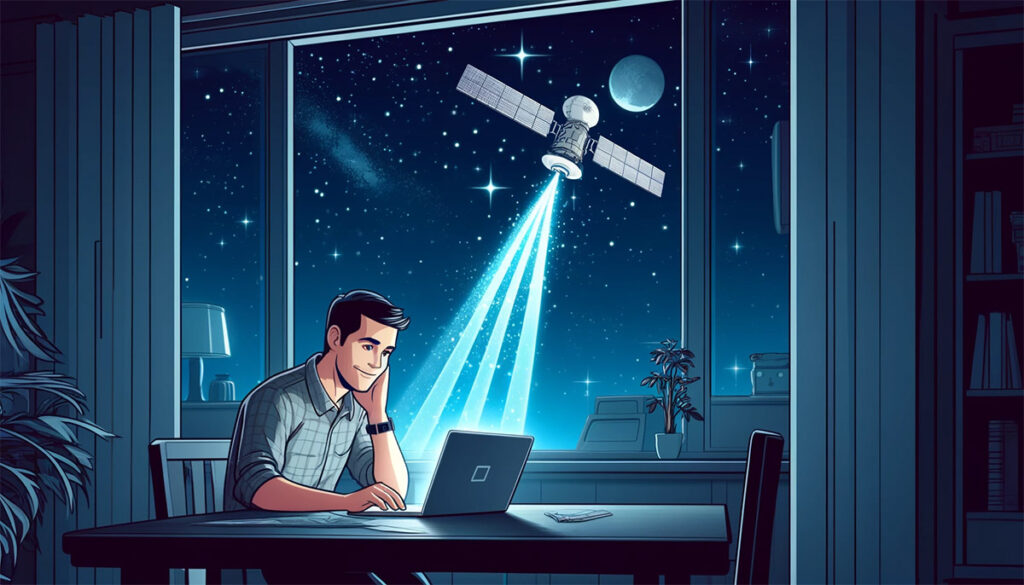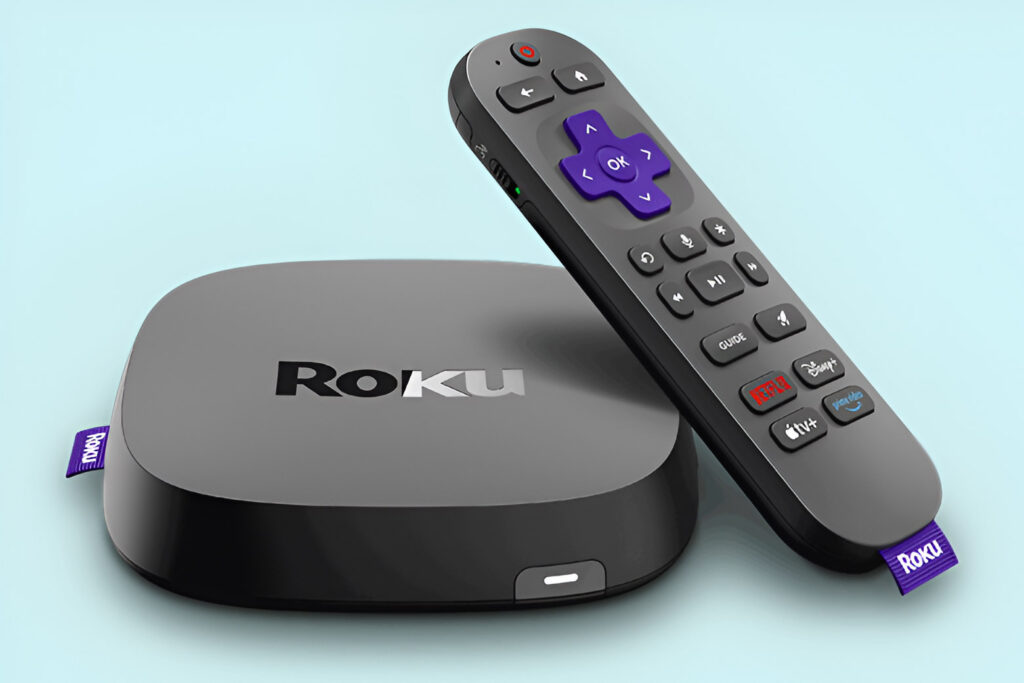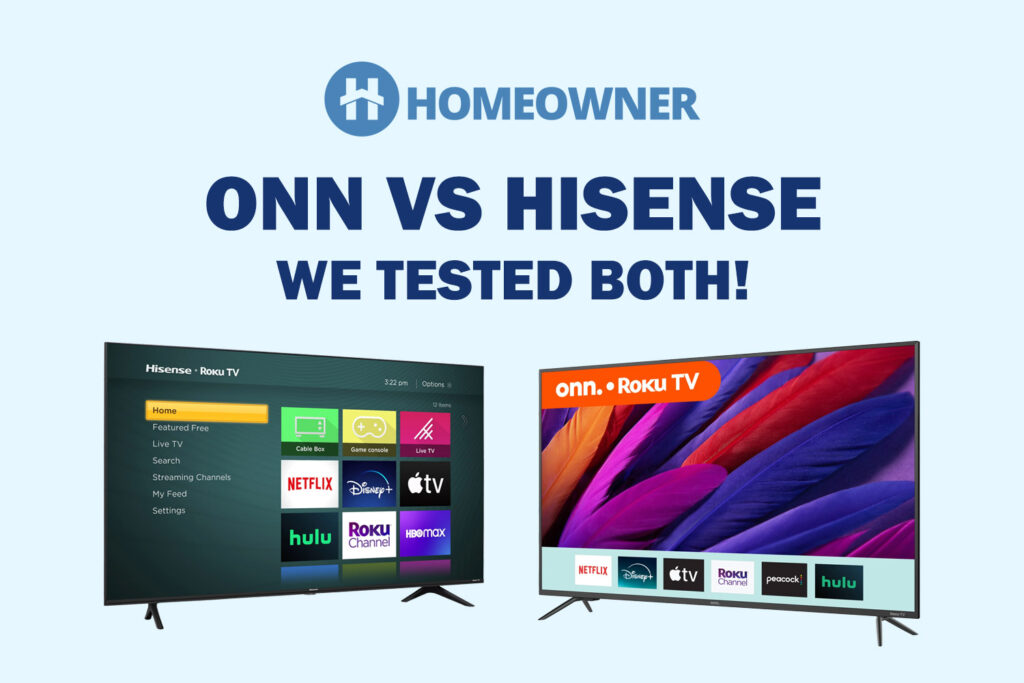In 2025, Elon Musk's Starlink is speedier than ever. But, is the futuristic satellite internet provider fast enough for everyday internet usage? And, how does Starlink stack up against more conventional types of internet, like cable and fiber?
Is Starlink Internet Fast?
For a wireless internet provider, Starlink offers pretty impressive speeds. Starlink satellite internet is capable of delivering download speeds in the range of 25-220 Mbps and upload speeds between 5-20 Mbps to users across the world.
Most Starlink users average download speeds above 100 Mbps. This is rather slow compared to the blazing-fast, multi-gig speeds boasted by fiber internet. But, for many individuals living in underserved areas lacking broadband internet access, such speeds were previously unthinkable.
| Residential | Roam | Boat | |
|---|---|---|---|
| Price | $120/month | $50–$165/month | $250–$1,000/month |
| Download Speed | 50–250 Mbps | 30–220+ Mbps | 40–220+ Mbps |
| Upload Speed | 5–25 Mbps | 5–25 Mbps | 5–25 Mbps |
| Data/Speed Caps | None | None | None |
| Data | Unlimited | 50 GB–Unlimited | 50 GB–1 TB |
| Best For | Fixed home internet | Traveling or remote work | Maritime, emergencies, or remote work |
As you may have guessed, Starlink has become very popular in rural and remote regions with limited internet options. However, Starlink's edge over other types of rural internet isn't only because of its faster speeds. It also has low latency – around 25-60 ms.
🌩️ Pro Tip: Weather can affect internet speed! Use a home weather station to track storms that might disrupt your internet connection.
In remote locations like Alaska or Antarctica, latency may be higher, around 100 ms. However, this is still a significant improvement over traditional satellite internet providers like Viasat or Hughesnet, which typically have latency rates of 600 ms or higher.
Latency, or ping, measures how long it takes data to travel from your device to a server and back again. It's important to have low ping if you want to use your internet connection for things like online gaming or video calls.
Exact speed and latency specifications vary based on factors like location and are different for each Starlink plan. Starlink offers four different plans: Standard, Priority, Mobile, and Mobile Priority. All plans are available in 99% of Starlink's service areas.
👉 Related reading: 7 Best Routers for Satellite Internet [Expert Choices]
🖥️ Residential

Starlink's Residential plan is designed for the majority of residential users. Standard download speeds are between 25-100 Mbps. Upload speeds are 5-10 Mbps. Latency is in the range of 25-60 ms.
| Details | |
|---|---|
| Download Speed | 50-250 Mbps |
| Upload Speed | 5-25 Mbps |
| Latency | 25-60 ms |
| Data Limits | Unlimited |
| Network Priority | Normal |
| Typical Use Case | Residential use, suitable for browsing the web, streaming videos or music, making video calls, and playing online games. |
These internet speeds are suitable for all of the activities you may regularly use your home internet for, including browsing the web, streaming videos or music, making video calls – and yes, even playing online games. For more information on Starlink's performance with online gaming, check out: Is Starlink Good for Gaming?
Data is unlimited, so you can use the internet as much as you want without having to worry about overage charges. But, customers who pay for the more expensive Priority plan do get network priority and faster speeds than those on the Standard plan.
🌟 Priority

Although all Starlink plans include unlimited data, the company also gives you the option to purchase a set amount of “priority” data each month to get faster speeds and optimal performance. With the Priority plan, you can choose between 40 GB, 1 TB, or 2 TB of monthly data that gives you priority on the network over Standard users.
| Feature | Details |
|---|---|
| Download Speed | 40-220 Mbps |
| Upload Speed | 8-25 Mbps |
| Latency | 25-60 ms |
| Data Limits | 40 GB, 1 TB, or 2 TB of “priority” data per month |
| Network Priority | Higher than Standard |
| Typical Use Case | High-demand internet users, suitable for households with high data usage, remote work, and enhanced online gaming experiences. |
Ping rates remain in the same range as the Standard plan (25-60 ms), but the Priority plan boasts faster download speeds, between 40-220 Mbps. Upload speeds are also slightly higher, around 8-25 Mbps. However, keep in mind that Priority speeds only last as long as the selected data plan. Once your allotment of “Priority data” is used up, it will drop down to Standard data and speeds.
👉 Related: Nomad Internet – Wireless Broadband Review
The Priority plan is best suited for high-demand internet users. If your household uses an exceptional amount of data every month, you rely on your internet connection for work, or you want an extra boost when online gaming, it might be worth it to upgrade to this plan. Read the full Starlink review to learn more.
🚛 Roam

Aside from its residential and business plans, Starlink offers a few mobile plans designed for travelers. The Mobile plan is best for RVs and campers. It features in-motion use on land, along with the ability to pause/unpause service at any time.
| Feature | Roam 50 GB | Roam Unlimited |
|---|---|---|
| Price | $50/month | $165/month |
| Data | 50 GB | Unlimited |
| Coverage | Countrywide | Countrywide |
| Speed Support | Up to 100 mph | Up to 100 mph |
| Additional Features | Internet up to 12 miles off the coast | Internet up to 12 miles off the coast, ability to pause service monthly |
Roam plans are designed for travelers, RVs, and campers, featuring in-motion use on land and the ability to pause/unpause service.
Starlink's Roam plan is the slowest plan they offer. Typically, mobile users get download speeds between 5-50 Mbps. Upload speeds fall in the range of 2-10 Mbps.
Latency is also higher than Starlink's regular plans, but still less than 99 ms. So, while Roam plans have speeds that are good enough for most online tasks, they're not the best for activities where having a low ping rate matters, like online gaming.
Like Starlink's residential offering, you get unlimited data, but customers who pay for extra “priority” data experience faster speeds and performance.
👉 Related reading: Netgear Nighthawk RAX54S Review: After 2 Months of Use
🚢 Boats

Boat plans gives the option of purchasing 50GB or 1TB of data each month to get priority on the network.
| Feature | Mobile Priority 50 GB | Mobile Priority 1 TB |
|---|---|---|
| Price | $250/month | $1,000/month |
| Download Speed | 50–220+ Mbps | 50–220+ Mbps |
| Upload Speed | 8–25+ Mbps | 8–25+ Mbps |
| Latency | Less than 99 ms | Less than 99 ms |
| Data (Ocean) | 50 GB | 1 TB |
| Best For | Navigation or weather monitoring on the ocean | Streaming movies, video calls, and gaming |
| Data (Inland) | Unlimited Mobile Data | Unlimited Mobile Data |
Download speeds are boosted to 40-220 Mbps. Upload speeds also get an increase to 8-25 Mbps. Ping is still higher than Starlink residential and business plans, but you shouldn't expect them to exceed 99 ms.
Featuring in-motion use on the ocean, this plan was created for boats. But, it is also well-suited for emergency response teams and mobile businesses.
Is Starlink Faster Than Cable?
In most areas, though not all, cable internet is faster than Starlink. Per November 2023 data, cable internet users in the United States experience download speeds of 219 Mbps, on average. This is on the higher end of Starlink estimates, though some Starlink users have reported download speeds as high as 265 Mbps.
| Feature | Starlink | Cable Internet |
|---|---|---|
| Average Download Speed | 50-220 Mbps | 50-2,000 Mbps |
| Average Upload Speed | 5-25 Mbps | 5-50 Mbps |
| Typical Latency | 25-100 ms | Varies widely, typically lower than Starlink |
| Availability | Global, all areas | Primarily urban and suburban areas |
That said, cable internet speeds vary greatly depending on the provider and availability in a specific location. Generally speaking, download speeds fall in the spectrum of 50-2,000 Mbps. Upload speeds are typically between 5-50 Mbps.
So, in many places, like cities and suburban areas, cable internet greatly outshines Starlink. But, in some rural areas, cable internet is limited to slow speeds (often for exorbitant prices.) In that case, Starlink may be faster.
👉 Related reading: 6 Best TDS Compatible Modems in 2025 [Top Picks]
Is Starlink Faster Than Fiber?
Although Starlink is fast as far as rural internet goes, it cannot compare to fiber internet. Instead of traditional copper wiring, fiber internet uses fiber-optic wires to transmit data. This allows for lightning-fast upload and download speeds.
| Feature | Starlink | Fiber Internet |
|---|---|---|
| Average Download Speed | 50-220 Mbps | 1,000-10,000 Mbps |
| Average Upload Speed | 5-25 Mbps | 1,000-10,000 Mbps |
| Typical Latency | 25-100 ms | Very low, typically less than 20 ms |
| Availability | Global, all areas | Limited, mainly in urban areas |
Most fiber internet companies offer gigabit speeds of at least 1 Gig, with many fiber providers boasting multi-Gig plans – up to 10 Gigs! Often, these plans include symmetrical upload and download speeds.
Fiber internet is ideal for HD streaming, online gaming, transferring large quantities of data, and pretty much everything else you use the internet for. The only downside is its limited availability in the United States.
Right now, fiber internet is rarely available outside of large, population-dense areas. This is even more true for rural locations, where it's difficult to build the needed infrastructure.
Is Starlink Faster Than 5G?
Rural internet users typically only have a few options when it comes to high-speed internet access. Since rural areas typically lack internet infrastructure, many users rely on a wireless internet connection. Like satellite internet, 5G is another kind of wireless internet. It uses cell towers to transmit data, instead of satellites.
| Starlink | 5G Home Internet | |
|---|---|---|
| Average Download Speed | 50-220 Mbps | 72-245 Mbps (T-Mobile), 50-1000 Mbps (Verizon) |
| Average Upload Speed | 5-25 Mbps | 15-31 Mbps (T-Mobile), 5-75 Mbps (Verizon) |
| Typical Latency | 25-100 ms | Generally lower than Starlink |
| Availability | Global, all areas | Urban and increasingly suburban areas |
5G Home Internet is a fairly new type of service. The two main providers are T-Mobile and Verizon. In terms of speed, 5G internet is pretty similar to Starlink satellite internet. In many cases, 5G may be faster than Starlink, and it is certainly the cheaper option.
T-Mobile 5G Home Internet offers download speeds between 72-245 Mbps and upload speeds of 15-31 Mbps. Although, funnily enough, T-Mobile partnered with Starlink to help provide better satellite phone service coverage.
Verizon 5G Home Internet speeds fall into a wider range of 50-1000 Mbps for download speeds and 5-75 Mbps for upload speeds. Exact speeds vary depending on the plan you purchase and your proximity to the closest cell tower.
👉 Related reading: Spectrum Mobile vs T-Mobile: Detailed Comparison
How Fast Is Starlink?

Starlink is fast, but not astoundingly so. It won't blow you away when stacked up against fiber or cable internet, but Starlink is fast enough for all of your day-to-day internet activities, including online gaming.
| Starlink | Cable | Fiber | 5G | |
|---|---|---|---|---|
| Average Download Speed | 25-220 Mbps | 50-2,000 Mbps | 1,000-10,000 Mbps | 50-1,000 Mbps |
| Average Upload Speed | 5-25 Mbps | 5-50 Mbps | 1,000-10,000 Mbps | 5-75 Mbps |
| Typical Latency | 25-100 ms | Varies widely | Very low | Lower than satellite |
| Availability | Global, all areas | Urban/suburban areas | Limited, mainly urban | Urban/suburban areas |
The answer depends on where you live and what other internet options you have. If you live somewhere with abundant internet options, Starlink won't be beneficial to you. Most cities and suburban areas have access to gigabit speeds from fiber or cable internet providers.
On the other hand, if you live in the countryside where your broadband internet options are slim to none, Starlink could be a godsend. When it comes to speed and latency, Starlink upstages many other types of rural internet, like traditional satellite and DSL. Still, 5G is a lot cheaper and could be the better pick, depending on availability and specific speeds in your location.
Before you decide if Starlink is the best choice for you, be sure to check out our in-depth reviews of the best internet providers.
Want more awesome internet guides? Checkout:






